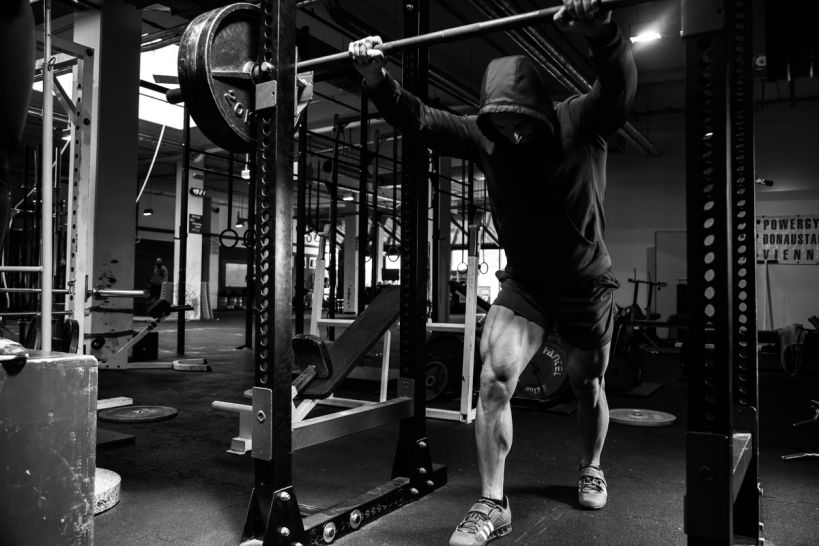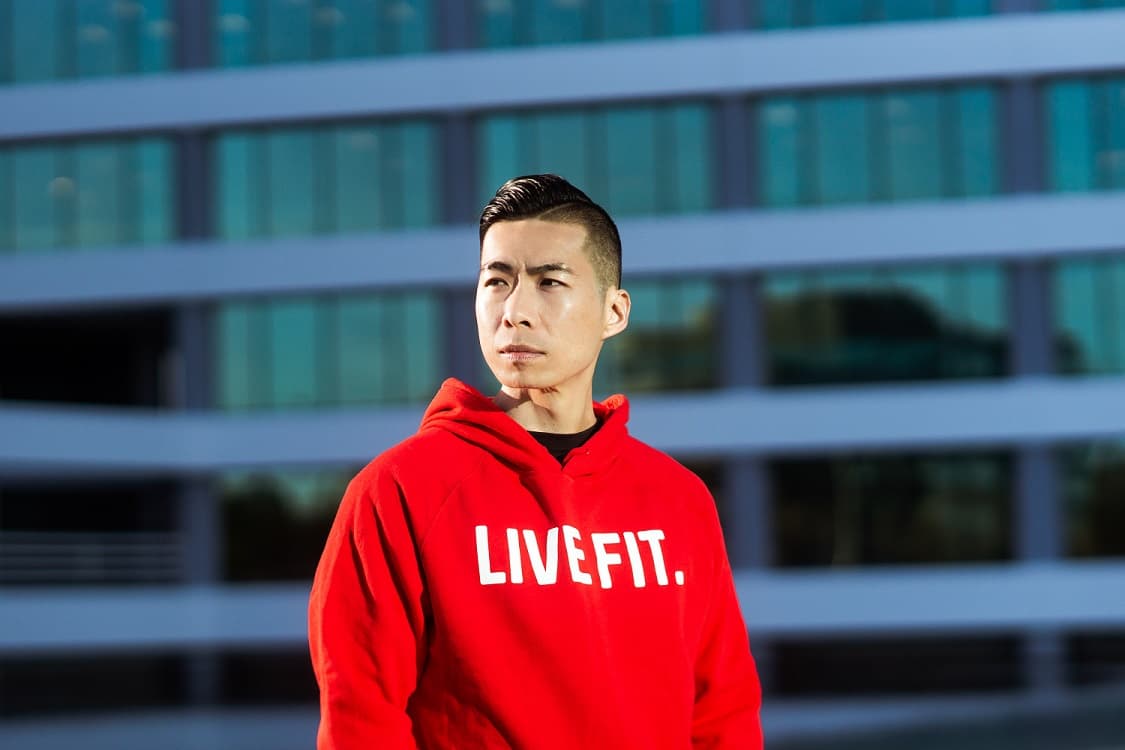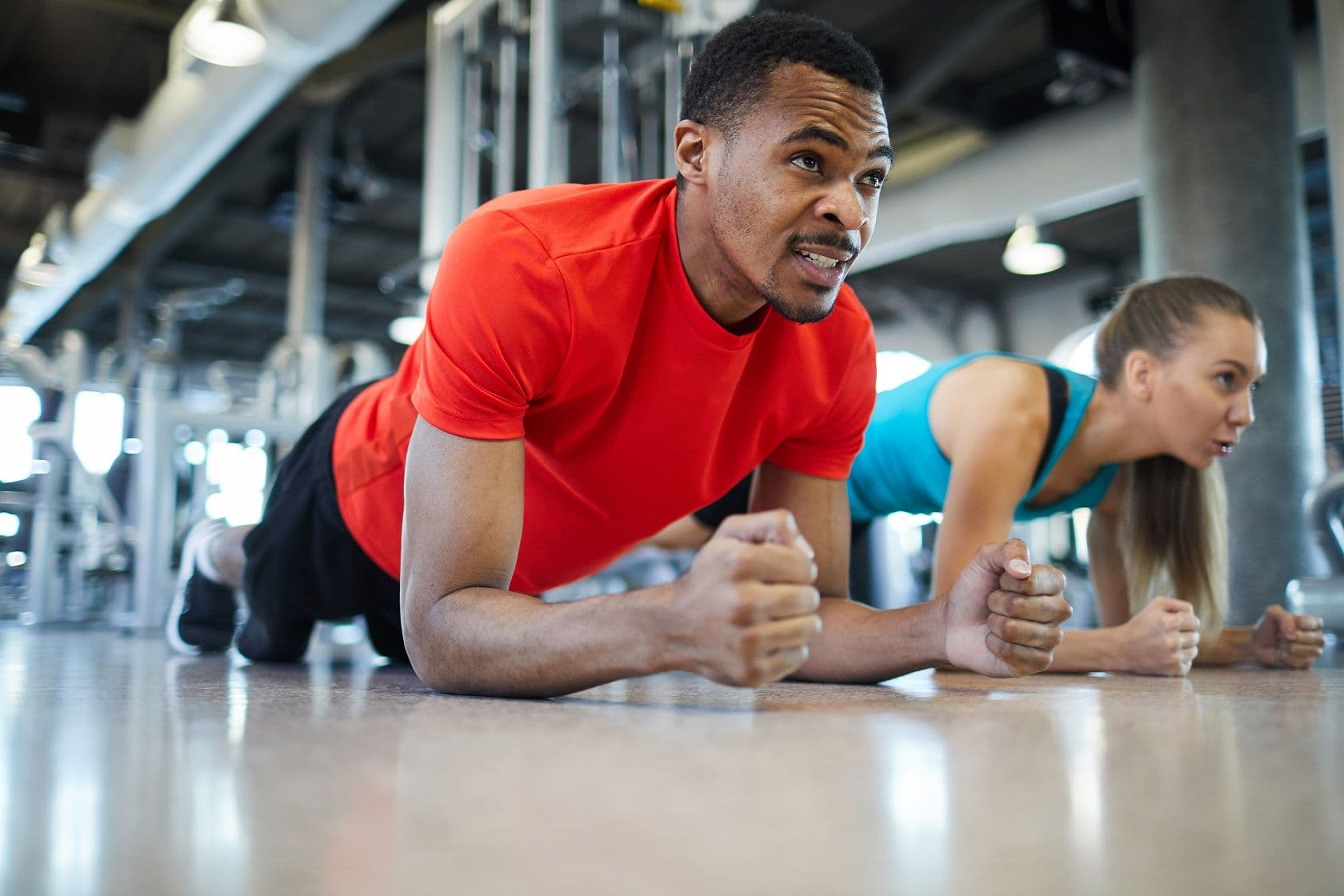Strategies to Strengthen Your Core
Introduction
Welcome to the exciting journey of discovering strategies to strengthen your core! It's time to unlock the power within you and unleash a stronger, healthier version of yourself. The core, often underestimated but essential, plays a critical role in our overall fitness and health. It is not just about achieving chiseled abs; it's about building a solid foundation that enhances our daily activities and athletic performance.
The Core: Your Body's Powerhouse
So why is having a strong core so important? Well, think of your core as the powerhouse that supports every movement you make. From bending over to tie your shoelaces to lifting heavy objects or even maintaining good posture, it all starts with a strong center. A well-trained core provides stability and balance while reducing the risk of injury in day-to-day activities.
The Benefits Beyond Appearance
While having defined abdominal muscles can be an attractive bonus, the benefits of a strong core go far beyond mere aesthetics. A robust core improves overall body strength and endurance by allowing muscles to work together more efficiently. It enhances performance in various sports, from running to weightlifting, by providing a stable base for generating power. Furthermore, a strong core helps alleviate back pain and improves posture by supporting the spine and aligning the body properly.
The Core Muscles: More Than Just Abs
When we talk about the core muscles, most people immediately envision six-pack abs. But did you know that your core encompasses much more than just those superficial abdominal muscles? Your deep inner layer includes key players such as transverse abdominis (TVA), multifidus, pelvic floor muscles, and diaphragm – all working together like an orchestra to provide stability and control throughout movement.
The Gateway to Functional Fitness
Emphasizing core strength is not just reserved for athletes or fitness enthusiasts. It is a gateway to functional fitness, allowing us to perform daily activities with ease and efficiency. Whether you're a busy parent lifting groceries, an office worker sitting at a desk for long hours, or an avid hiker exploring challenging terrains – having a strong core will improve your quality of life by enhancing your body's ability to move effectively.
Understanding the Core Muscles
When it comes to building a strong core, it's essential to have a clear understanding of the muscles involved. The core refers to a group of muscles located in your abdomen, lower back, pelvis, and hips. These muscles work together to provide stability and support during movement and play a crucial role in maintaining good posture. The primary muscles that make up the core include:
- The rectus abdominis: commonly known as the "six-pack" muscles that run vertically along the front of your abdomen.
- The transverse abdominis: a deep muscle layer that wraps around your torso and acts as a natural corset.
- The obliques: found on the sides of your abdomen, these muscles help with rotation and lateral flexion.
- The erector spinae: a group of muscles running along your spine that aid in back extension.
- The glutes: although primarily known for their role in hip extension, they also contribute significantly to core stabilization.
Functions and Benefits of a Strong Core
A strong core serves as the foundation for all movements we perform on a daily basis. Whether you're lifting heavy objects, playing sports, or simply maintaining good posture while sitting at your desk, having adequate core strength is vital for overall physical well-being. One of the key functions of having a strong core is stability. By strengthening these muscle groups, you improve your ability to stabilize your spine and maintain proper alignment during various activities. This reduces the risk of lower back pain or injuries caused by poor posture or incorrect movement patterns. Besides providing stability, developing core strength can enhance athletic performance. Athletes across different disciplines rely on the power and stability generated from their core muscles to improve performance in their respective sports. From golf swings to tennis serves, a strong core facilitates efficient transfer of force throughout the body. Additionally, a strong core can help alleviate everyday discomfort. By having well-developed abdominal muscles, you'll notice improved digestion and reduced strain on your back during activities such as lifting heavy objects or even just bending over to tie your shoes. Let's not forget about aesthetics. A toned and well-defined midsection is often seen as a symbol of fitness and health. While it's important to prioritize functional strength over appearance, there's no denying the confidence boost that comes with having a strong core and a sculpted six-pack. Now that we have delved into the definition, location, functions, and benefits of the core muscles, it's time to explore effective strategies that can help strengthen this crucial area of our body.
High-Level Strategies to Strengthen Your Core
The journey to a stronger core begins with incorporating high-level strategies into your fitness routine. By engaging in regular full-body exercises and utilizing stability training tools, you can target your core muscles effectively. Let's explore two key strategies: full-body compound movements and stability training.
Engaging in Regular Full-Body Exercises
A great way to strengthen your core is through full-body compound movements. These exercises engage multiple muscle groups simultaneously, providing a comprehensive workout for your entire body while placing significant emphasis on the core muscles. Squats: This classic exercise not only works your lower body but also engages the muscles of your core. As you squat down and stand up, your abdominal muscles must stabilize your spine and maintain proper form. Deadlifts: Deadlifts are excellent for targeting the posterior chain, which includes the lower back, glutes, and hamstrings. However, they also require strong core engagement throughout the movement to maintain stability and prevent rounding of the spine. Lunges: Lunges work wonders for developing leg strength but also challenge your balance and activate your core muscles as they stabilize you during each lunge. You can perform forward lunges, reverse lunges, or even walking lunges to add variety to your routine.
Incorporating Planks, Push-ups, and Mountain Climbers into Your Routine
To further enhance your core strength, adding specific exercises that directly target these muscles is essential. Planks are exceptional for building both strength and endurance in the entire core region. Push-ups: Although typically associated with upper body strength, push-ups require a stable midsection to maintain proper alignment throughout the movement. By keeping your abs tight while performing push-ups, you can intensify the core engagement. Mountain climbers: This dynamic exercise not only elevates your heart rate but also activates your core muscles. As you bring your knees forward in a running motion, your abs contract to stabilize your body and support the movement.
Utilizing Stability Training Tools and Equipment
Another effective strategy to strengthen your core is by incorporating stability training tools and equipment into your workouts. These tools add an element of instability, forcing your core muscles to engage more actively for balance and control. Swiss balls: Using a Swiss ball for exercises like sit-ups or Russian twists adds an unstable surface that challenges the core muscles in a unique way. The constant need for adjustment engages deep stabilizing muscles, ultimately leading to increased overall core strength. Balance boards: Training on a balance board improves proprioception and coordination while simultaneously activating the entire core. By standing or performing exercises on an unstable platform, you force your body to recruit additional muscle fibers for stabilization. Resistance bands: Incorporating resistance bands into exercises like standing woodchops or kneeling rotations increases the difficulty level while targeting the obliques and transverse abdominis. The constant tension provided by resistance bands adds significant challenge to these movements, resulting in better core activation. Incorporating these strategies into your fitness routine will undoubtedly lead to a stronger core over time. Remember to focus on proper form and gradually increase intensity as you progress. By engaging in regular full-body exercises and utilizing stability training tools, you'll be well on your way to achieving impressive core strength!
Strengthening the Rectus Abdominis (Six-Pack Muscles)
Crunches, Sit-ups, and Leg Raises Variations
Subtitle: Unleash the Power of Your Six-Pack When it comes to developing those coveted six-pack abs, crunches, sit-ups, and leg raises are your go-to exercises. These movements primarily target the rectus abdominis muscles, which run vertically along the front of your abdomen. To perform a basic crunch, lie on your back with your knees bent and feet flat on the floor. Place your hands behind your head, engage your core muscles, and lift your upper body towards your knees while keeping your lower back pressed against the floor. For an added challenge, you can try different variations such as reverse crunches or bicycle crunches. Russian twists and bicycle crunches not only engage the rectus abdominis but also provide oblique engagement for a well-rounded core workout. Russian twists involve sitting on the ground with knees bent and feet lifted off the floor. Hold a weight or medicine ball in front of you and twist from side to side by touching the weight or ball to the ground near each hip. This exercise targets not only the six-pack muscles but also strengthens the obliques.
Building a Strong Lower Back
Subtitle: Strengthen Your Foundation Having a strong lower back is crucial for maintaining good posture and preventing injuries during physical activities. Hyperextensions or back extensions are excellent exercises to strengthen this area. You can do these by lying face-down on a hyperextension bench or stability ball with your hips resting at its edge. Cross your arms over your chest or place them behind your head for support as you slowly raise yourself up until you feel a contraction in your lower back muscles. Bird dogs and supermans are two more effective exercises that target both the lower back and other core muscles. With bird dogs, start on all fours and extend one arm forward while extending the opposite leg backward, maintaining a straight line from head to toe. Hold for a few seconds before alternating sides. Supermans are performed by lying face-down with arms extended forward and legs straight. Simultaneously raise your arms, chest, and legs off the ground and hold for a few seconds before lowering back down. By incorporating these exercises into your routine, you'll be well on your way to developing a strong core that not only looks impressive but also enhances your overall functional strength and stability. Remember to perform each exercise with proper form, engage your core muscles throughout the movements, and gradually increase the intensity as you progress. Stay consistent, put in the effort, and reap the rewards of a solid core foundation that supports you in all aspects of life. Remember that building core strength takes time and patience; results won't happen overnight. Combine these targeted exercises with full-body workouts that engage multiple muscle groups for optimal results. And always listen to your body – if you experience any pain or discomfort during these exercises, consult with a fitness professional to ensure proper form and technique. So go ahead – let's embark on this journey together towards a stronger core!
Pilates: The Art of Core Activation
Pilates, often referred to as the art of core activation, is a lesser-known technique that can significantly enhance your core strength. This exercise method was developed by Joseph Pilates in the early 20th century and has gained popularity for its ability to engage deep core muscles effectively. Unlike traditional workouts that primarily focus on superficial muscles, Pilates targets the deeper layers of the core, such as the transverse abdominis and pelvic floor muscles. These muscles act as stabilizers and are crucial for maintaining proper posture, balance, and spinal alignment. One of the key principles of Pilates is controlled movements. By performing slow and deliberate exercises, you activate your deep core muscles more effectively. Each movement in Pilates focuses on engaging specific core areas while emphasizing proper form and alignment.
Focusing on controlled movements that target specific core areas
In Pilates, various exercises are designed to specifically target different areas of the core. For instance:
- The Hundred: This exercise involves lying on your back with your knees bent.
You lift your head, shoulders, and legs off the ground while pumping your arms up and down in a controlled manner. It targets both upper and lower abdominal muscles.
- The Plank: A staple in most workout routines today, the plank is also commonly practiced in Pilates. By assuming a push-up position with straight arms or resting on forearms instead of hands while keeping a perfectly straight body line from head to toe, you engage not only your rectus abdominis but also oblique muscles.
- The Bridge: This exercise involves lying on your back with bent knees and lifting your hips off the ground until your body forms a straight line. The bridge targets the glutes, hamstrings, and lower back muscles, all of which are integral to core strength.
Yoga Poses for a Stronger Core
Yoga, renowned for its mind-body connection, is another fantastic avenue to strengthen your core. While yoga is often associated with flexibility and relaxation, it can also be an incredibly effective way to target and activate the entire core region. Many yoga poses require you to engage your core muscles continuously throughout the practice. Poses such as plank variations (e.g., forearm plank), boat pose (Navasana), and warrior III (Virabhadrasana III) are particularly beneficial in activating not only your abdominal muscles but also the muscles of your back and hips.
Explaining how yoga improves flexibility while strengthening the core
In addition to building core strength, one of the unique benefits of practicing yoga is improved flexibility. Yoga poses gently stretch and lengthen muscle fibers in various directions, ultimately increasing overall range of motion. When it comes to strengthening the core specifically, enhanced flexibility plays a vital role. It allows a greater range of motion during exercises like twists or bends, enabling deeper engagement of both superficial and deep core muscles. Moreover, practicing yoga cultivates body awareness and breath control. By focusing on breath-centered movement patterns, you learn to activate your deep core muscles more effectively during static holds or dynamic transitions between poses. Incorporating Pilates or yoga into your fitness routine offers a diverse approach to strengthen your core beyond traditional exercises. Pilates emphasizes controlled movements that target specific areas while engaging deep core muscles effectively. On the other hand, by incorporating various yoga poses that activate the entire core region while improving flexibility simultaneously, you can achieve a stronger and more stable core.
Rarely Known Small Details: Unconventional Approaches to Strengthen Your Core
Breathing Techniques
Subtitle: The Power of Breath for a Strong Core When it comes to strengthening your core, you might not immediately think of the role that breathing plays. However, incorporating specific breathing techniques into your workouts can greatly enhance the effectiveness of your core training. One such technique is diaphragmatic breathing, also known as belly breathing. By taking deep breaths that expand your belly rather than shallow chest breaths, you engage and activate your diaphragm and deep abdominal muscles, promoting better overall core stability. Try inhaling deeply through your nose, allowing your belly to expand fully, and then exhale slowly through pursed lips while drawing in your navel towards your spine. Another useful technique is called the "hollowing" or "drawing-in" maneuver. This technique involves gently pulling in and activating the transverse abdominis muscle by drawing the navel towards the spine while maintaining normal breathing. This subtle contraction provides a deep stabilization effect on the core muscles. Practice this technique during a plank exercise or even while sitting at your desk to continuously engage and strengthen those often neglected muscles. In addition to these specific techniques, paying attention to breath control throughout various exercises can have tremendous benefits for your core strength. For instance, exhaling forcefully when exerting effort during movements like squats or lifting weights increases intra-abdominal pressure, providing additional stability for the core muscles during these challenging exercises. Remembering to coordinate inhales and exhales with movement can help maximize strength gains and improve overall performance.
Conclusion
Subtitle: Unlocking Your Core Potential Congratulations! You've now delved into an array of strategies aimed at strengthening your core from all angles - from tried-and-true exercises to lesser-known approaches like Pilates and Yoga poses. By following these recommendations and incorporating them into your fitness routine, you're well on your way to developing a rock-solid core that will support you in various activities and improve your overall fitness level. Remember, core stability extends beyond having a toned midsection. It contributes to better posture, reduced risk of injury, and enhanced athletic performance. So embrace the challenge of engaging those deep abdominal muscles and integrating breathing techniques into your workouts. With consistency and dedication, you'll witness the transformative power of a strong core firsthand. Keep in mind that progress takes time, so be patient with yourself along the journey. Celebrate small victories and enjoy the process of pushing yourself further each day. With perseverance, you'll not only develop a stronger core but also cultivate mental resilience that can positively impact other aspects of your life. Now go out there and unlock the hidden potential within your core! Remember, every step counts towards achieving greatness.
About The Author


Get your macronutrients breakdown
Fill out the form below to get a preview of your recommended daily calorie and macronutrient breakdown.

Stubborn Subcutaneous Fat Loss | 3 Tips
Stubborn Subcutaneous Fat Loss | 3 Tips Introduction When it comes to shedding those stubborn pounds, one particular type of fat seems to be particu...

Why I Stopped Gaining Muscle (The Honest Truth)
Why I Stopped Gaining Muscle (The Honest Truth) The Importance of Gaining Muscle When it comes to health and fitness, gaining muscle holds a signifi...



